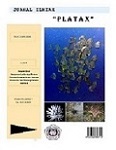Coral Fishes the Famili Chaetodontidae in Coral Reef Waters of Para Island Sub District Tatoareng, Sangihe Kepulauan Regency
DOI:
https://doi.org/10.35800/jip.1.4.2013.3705Abstract
This study aims to determine the distribution and abundance of reef fish families chaetodontidae in coral reef waters of Para Island Sub District Tatoareng. This study was conducted at 4 stations. Data collected was done using visual census on the 50-meter transect line at 5 meters depth. In addition to revealing the number of species and abundance of individuals chaetodontidae, data analysis aimed to determine number of species, individual abundance, and the community index. Based on the identification, obtained 27 species from 3 genera and 217 number of individuals. The highest number of species found at station Para 1. 7 species are always found in all observation stations, Chaetodon kleinii, C. punctatofasciatus, C. lunulatus, C. trifascialis, C. vagabundus, Heniochus varius, H. chrysostomus. The species with the largest number of individuals that is Chaetodon kleinii (45 individuals). Chaetodontidae fish species diversity index ranged between 2.207-2.866. Dominance Index are categorized low in the range of 0.078-0.122. Similarity index are categorized high in the range of 0.922-0.971.
Keywords : coral fishes, chaetodontidae, coral reef, Para Island
Downloads
How to Cite
Issue
Section
License
COPYRIGHT
Authors who publish with this journal agree to the following terms:
Authors hold their copyright and grant this journal the privilege of first publication, with the work simultaneously licensed under a Creative Commons Attribution License that permits others to impart the work with an acknowledgment of the work's origin and initial publication by this journal.
Authors can enter into separate or additional contractual arrangements for the non-exclusive distribution of the journal's published version of the work (for example, post it to an institutional repository or publish it in a book), with an acknowledgment of its underlying publication in this journal.
Authors are permitted and encouraged to post their work online (for example, in institutional repositories or on their website) as it can lead to productive exchanges, as well as earlier and greater citation of the published work (See The Effect of Open Access).






































